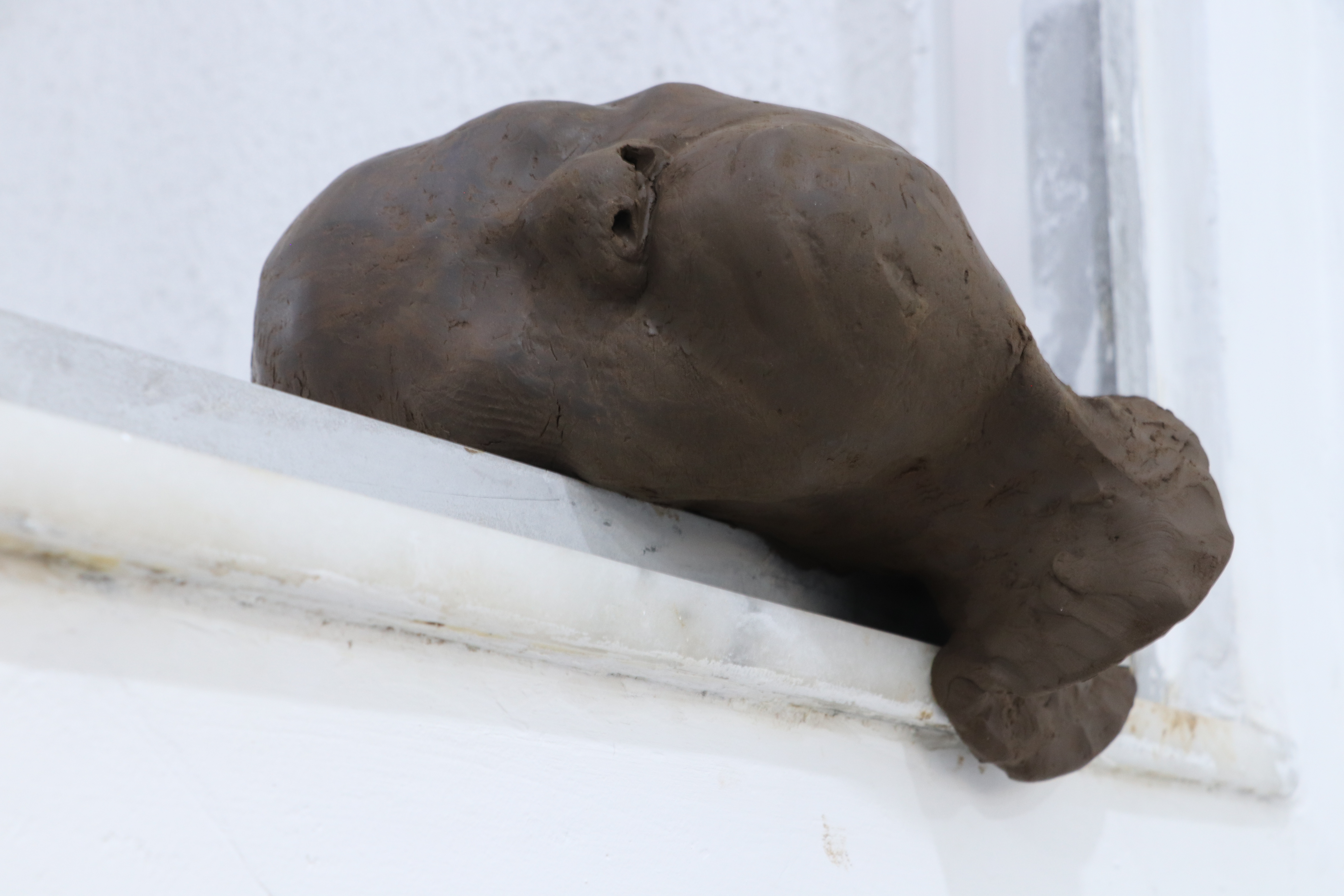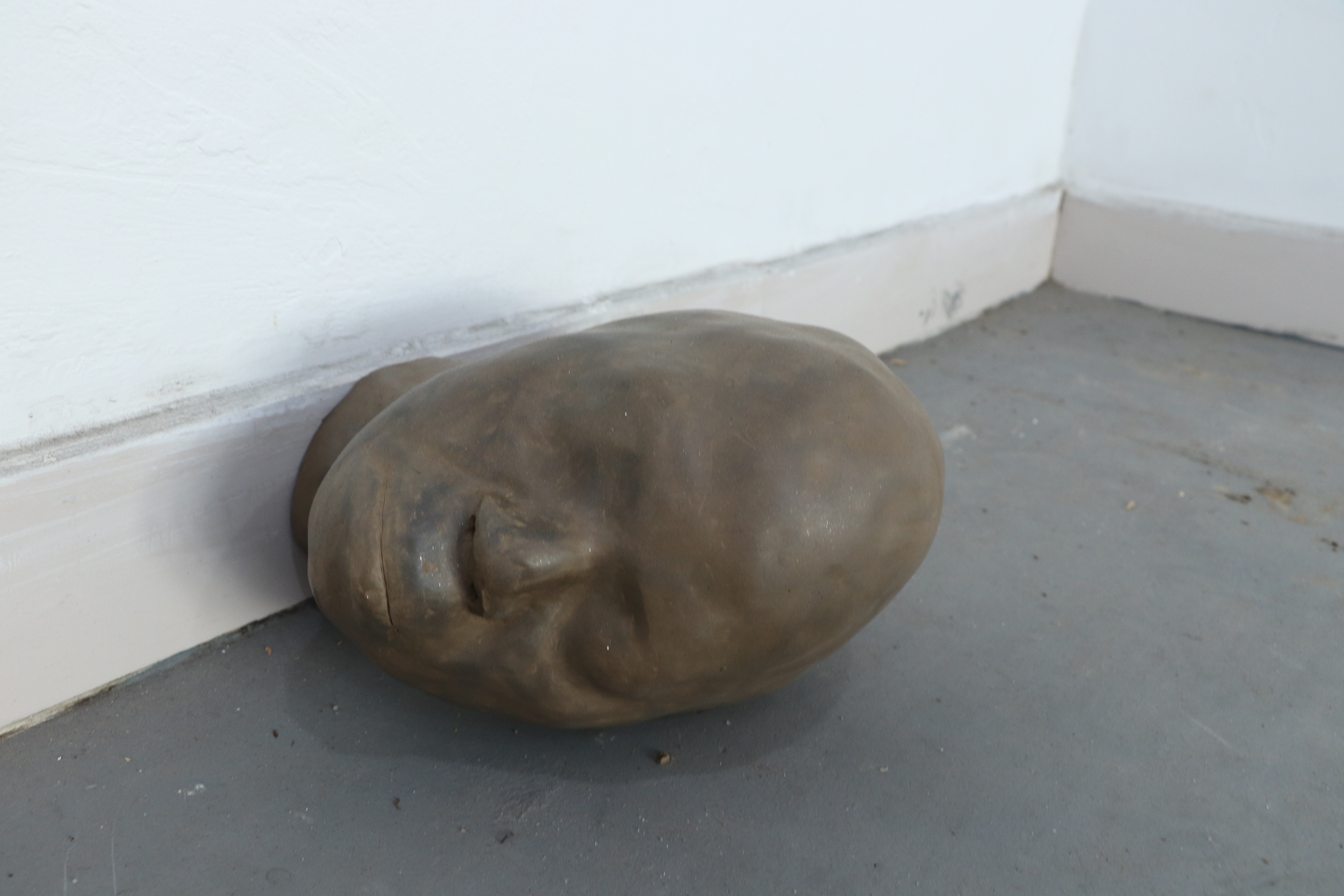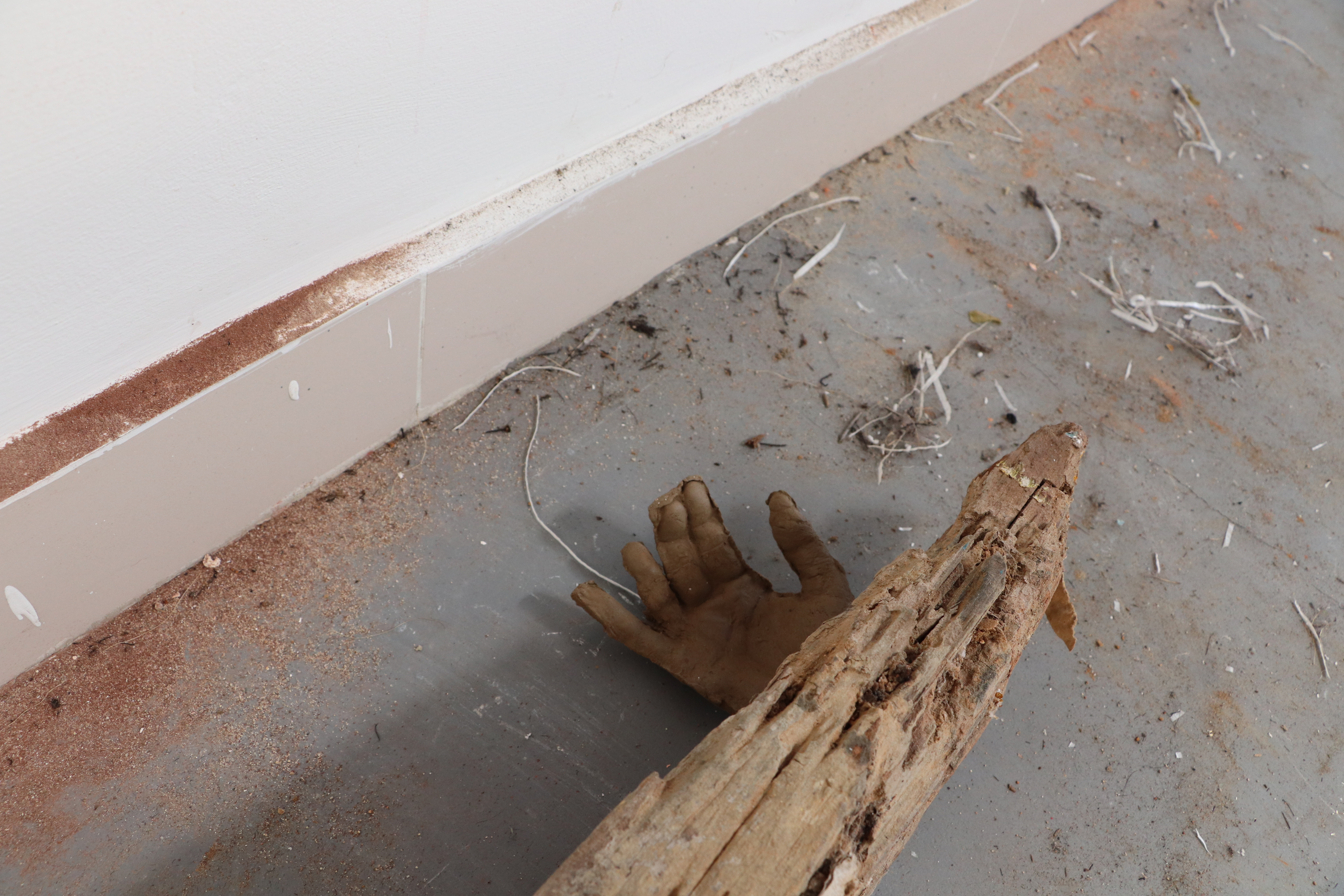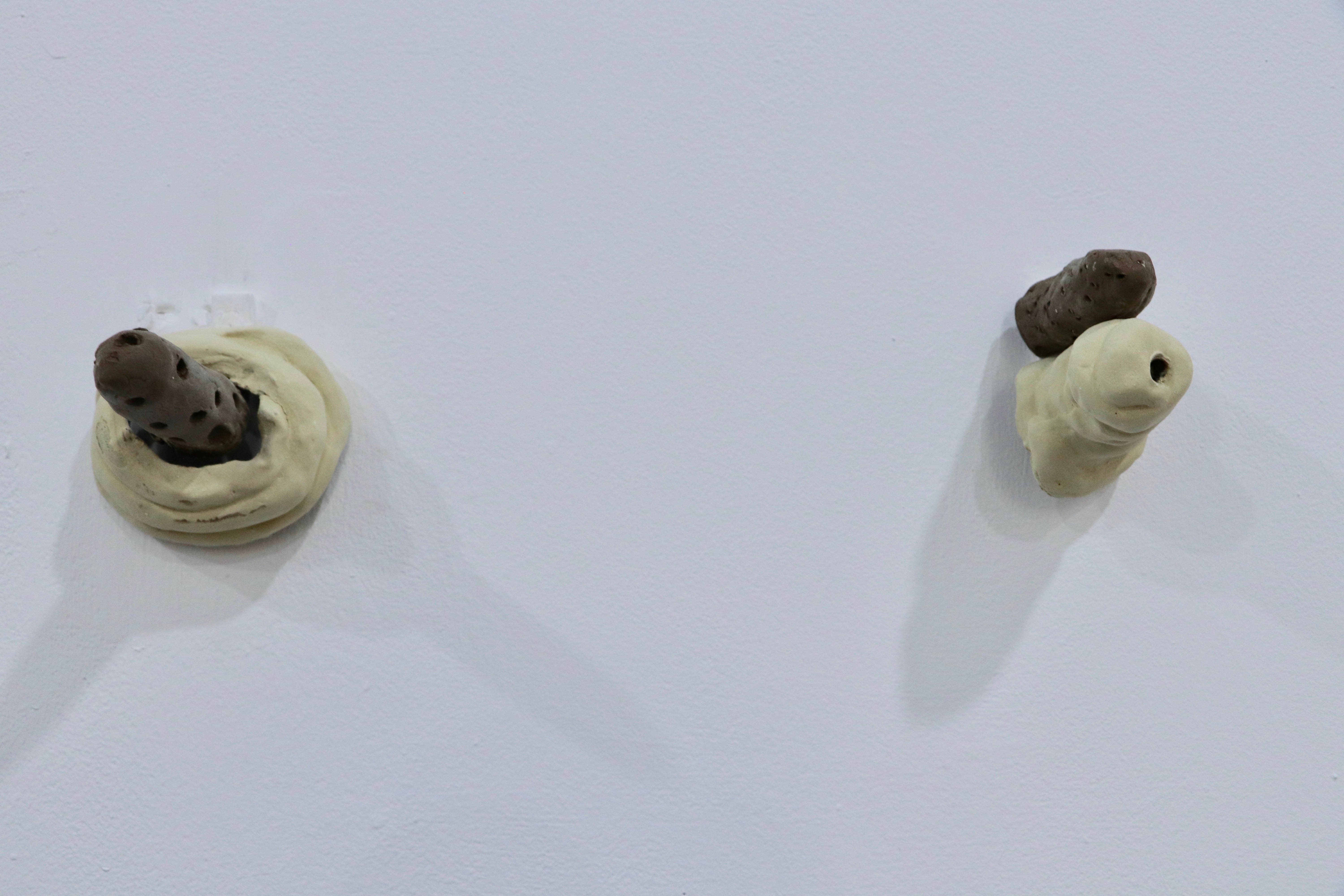Final exhibition at artistic residency in Despina, Rio de Janeiro
community sculptures
vulnerability
installation
unburned clay
exhibition at Despina
The final work I produced during my residency at Despina, is inspired in the vulnerability I felt and perceived in my environment in Rio de Janeiro. During this residency period I recognised myself in Rio. It was an identification with the chaos of the city and the vulnerability felt by the favela dweller.
During my stay, I tried to understand what is vulnerability within the favela. Many factors play a role. Vulnerable houses are sometimes constructed without property rights on the terrain, so the municipality can always evict those dwellers and demolish their houses. Powerful real state agents have great motivations to acquire the territory where favelas are positioned, because of their closeness to the beach, fantastic views and the neighbourhoods that surround them. My closeness to dwellers allowed me to understand their daily life struggle, their fight for a sustainable livelihood, in a context of poverty, violence and state abandonment. So the vulnerability in which my work is inspired was both related to the urban housing but also to the body living there, which is mostly the black body. Rio is a very intense city with unsolved post-slavery characteristics and huge discriminatory politics.
During my stay I searched for a close coexistence with people living in the favelas, because I admire their fight and all what they have achieved with their efforts, for themselves and their community. I belief there are very few people that achieve that much without state support. They survive and construct positive things.
For myself, I sometimes doubted about my own safety, listening the gun shots nearby or far away, could be frightening. Visiting the favelas and witnessing extreme inequality in the city could had a big impact in my mind. A feeling of impotence could overwhelm my body. But this always changed after speaking with my friends at the favelas, when observing their daily struggle. I had nothing more than to admire them, and feel connected to them.
The result of this interaction led to work developed together with people living in the favelas and other vulnerable communities. We had a special workshop called “Esculturas Comunitarias." The specific work developed during the workshop is explained in my previous blog post. The sculptures that were developed by individuals and groups, were made from material I had gathered at two favelas, Morro do Cantagalo and Morro de Providencia. I gathered this material with help of my friends living there. The material consisted of left out objects found at some streets and paths of the favelas. I also offered neutral materials like clay and cardboard to the participants. Final results were finally exposed during the exhibition “Senado Tomado 10” at Despina.
Antonia Ferreira, Luana Vieira and Sidney Tartaruga constructed “Pasado”, inspired on the “barraco”, which is a very fragile house used by original favela dwellers in the past.
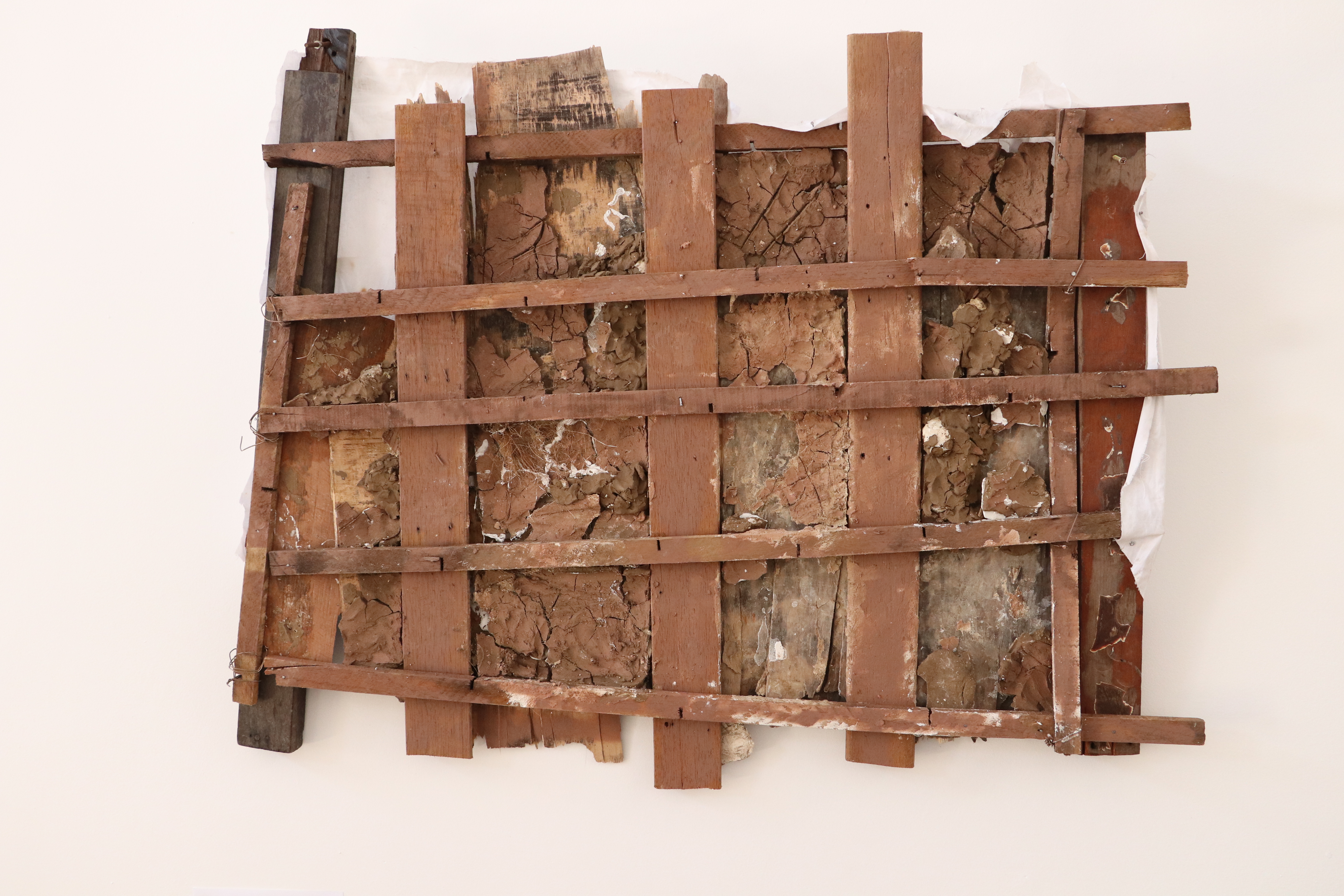
Rosalina Brito, Andre Rongo and Nelma Manhaes constructed “Posibilidade” a chair symbolising the possibility of self empowerment.
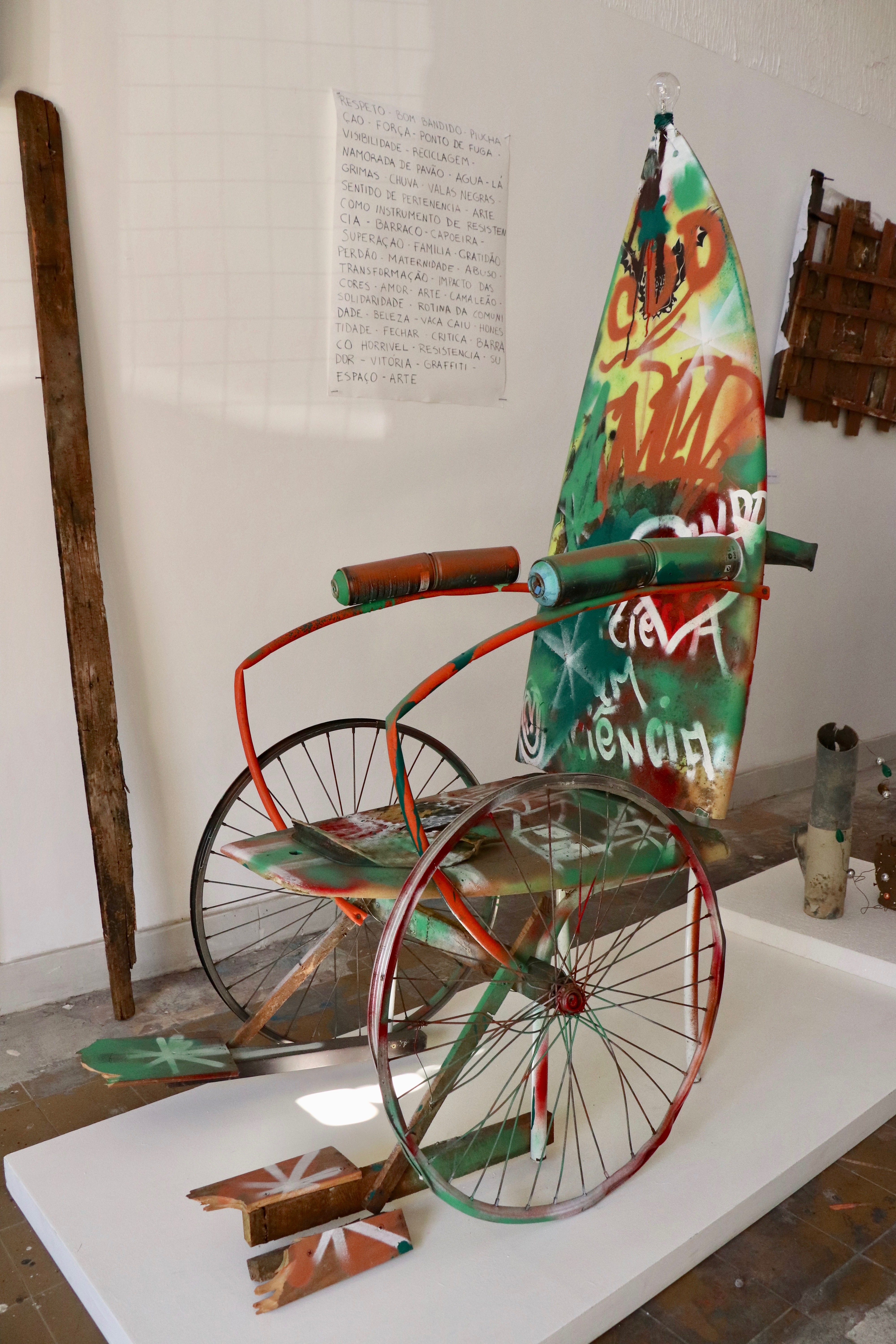
Nathalia Macena and Ricardo Rodrigues were fixed by the idea of inequality, why some have a bigger house and others a hut in the same city? You can see this expressed in their work.
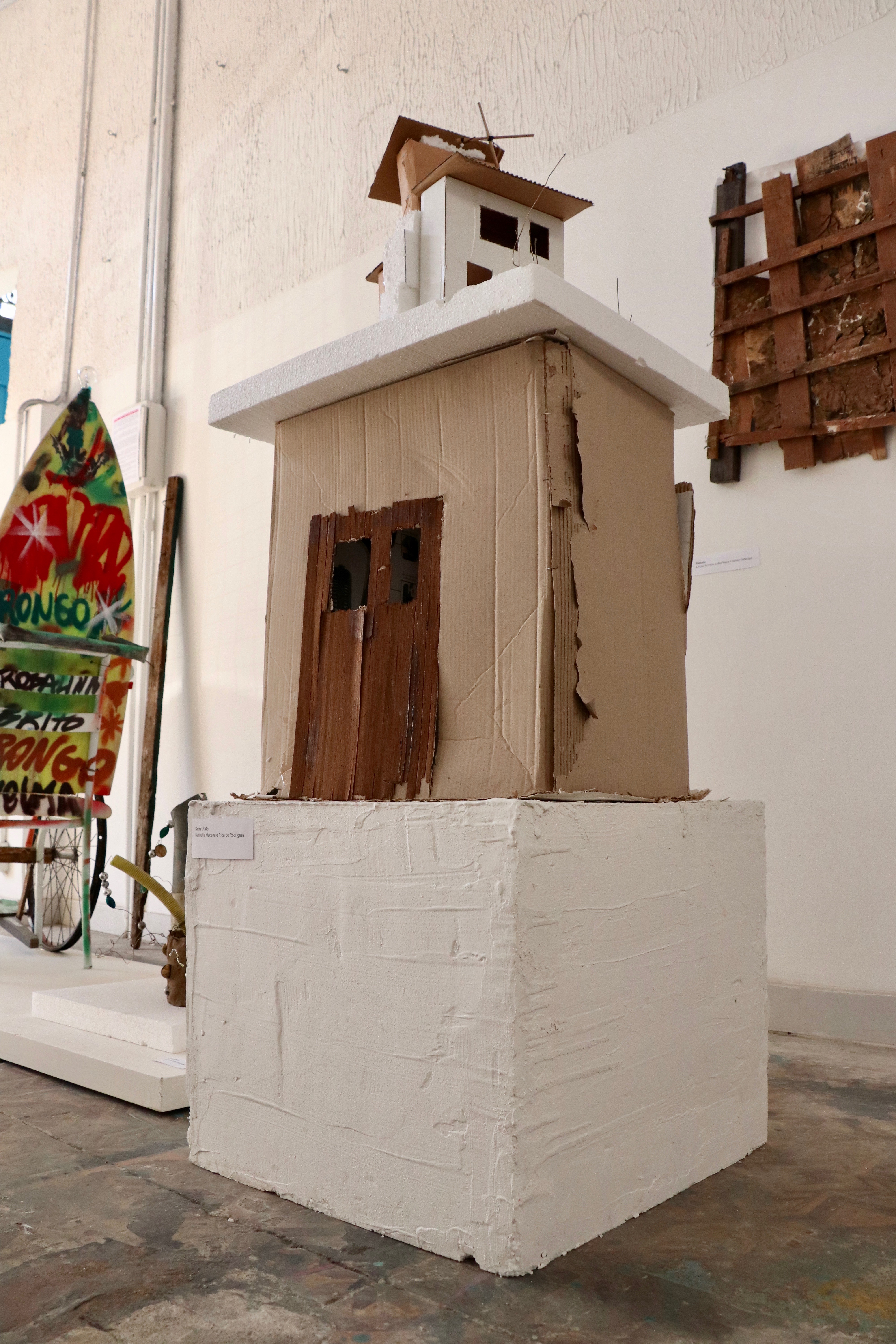
There were three people developing individual works. The works were a sort of abstraction of their own life experience.
Pamella Magno created a work related to equilibrium, called "Pavunao - Equilibrio Instavel”.
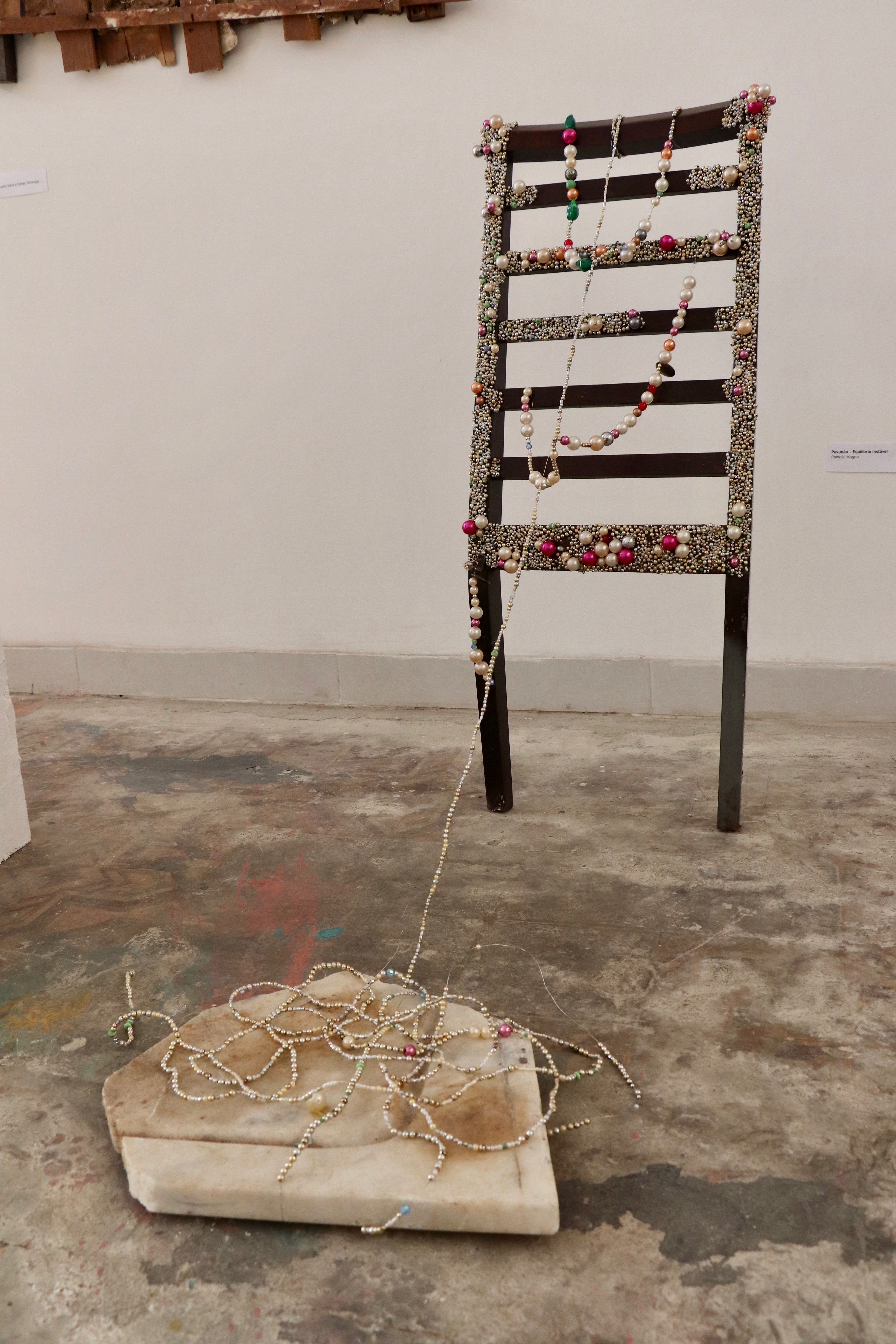
Monique Wermelinger a work related to symbiosis, called “S1Mb10S3”.
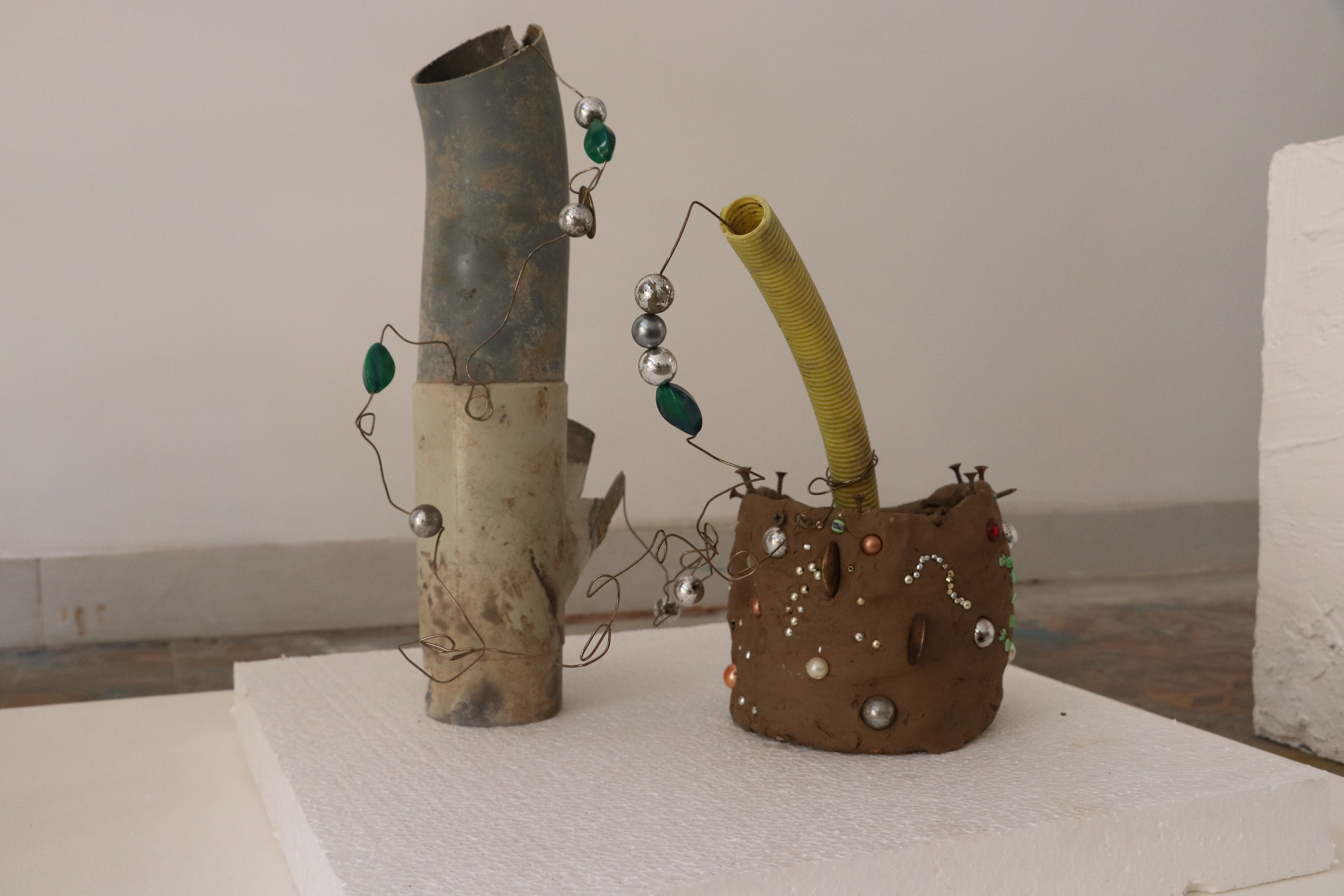
Aline Mendes is uses color to make interventions at Morro de Providencia, and here she is symbolically portraying herself with her used tools. Her work is called “Providencia, Meu Amor”.
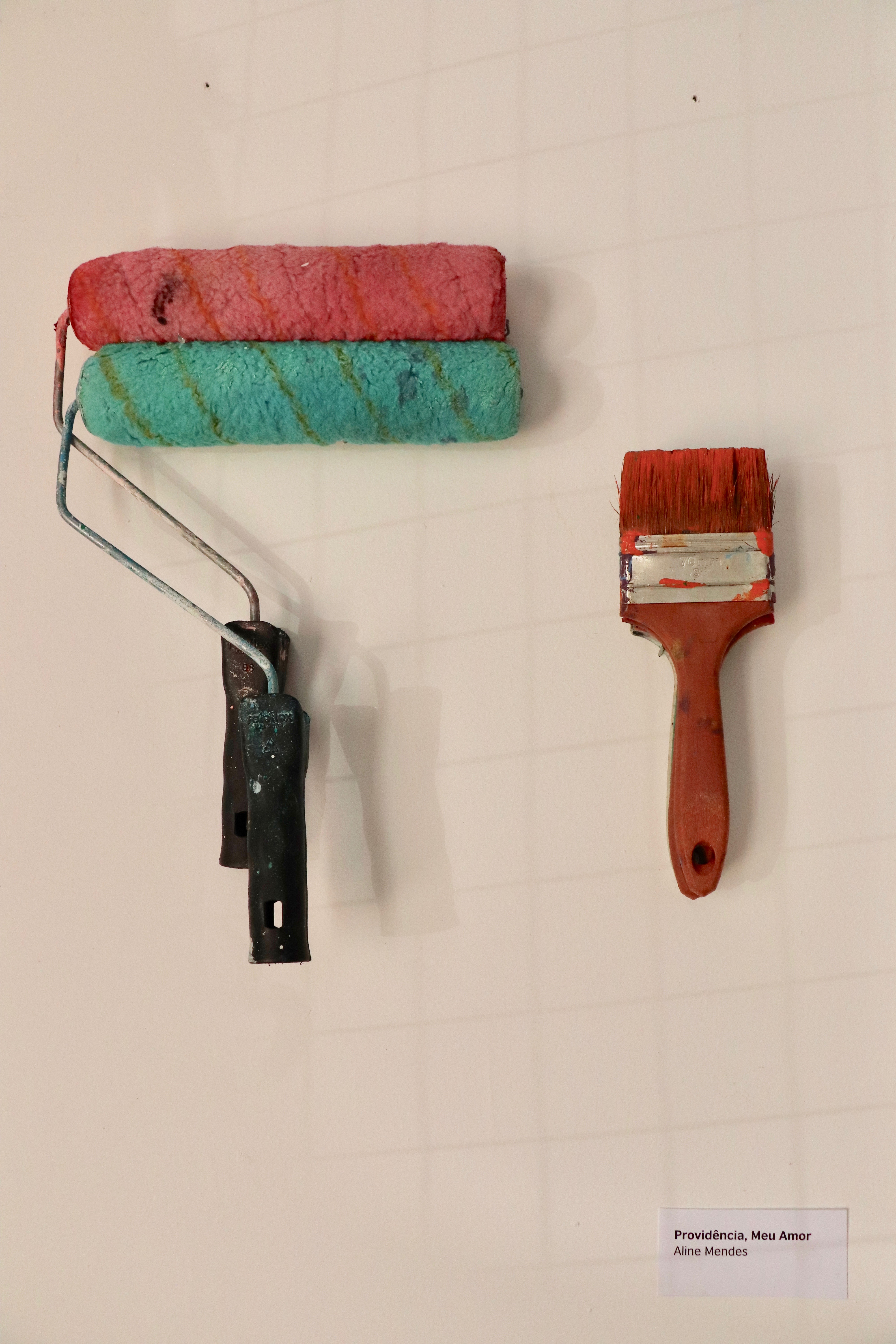
My individual work
An installation called "Home" was also exposed during the exhibition Senado Tomado 10, at Despina.
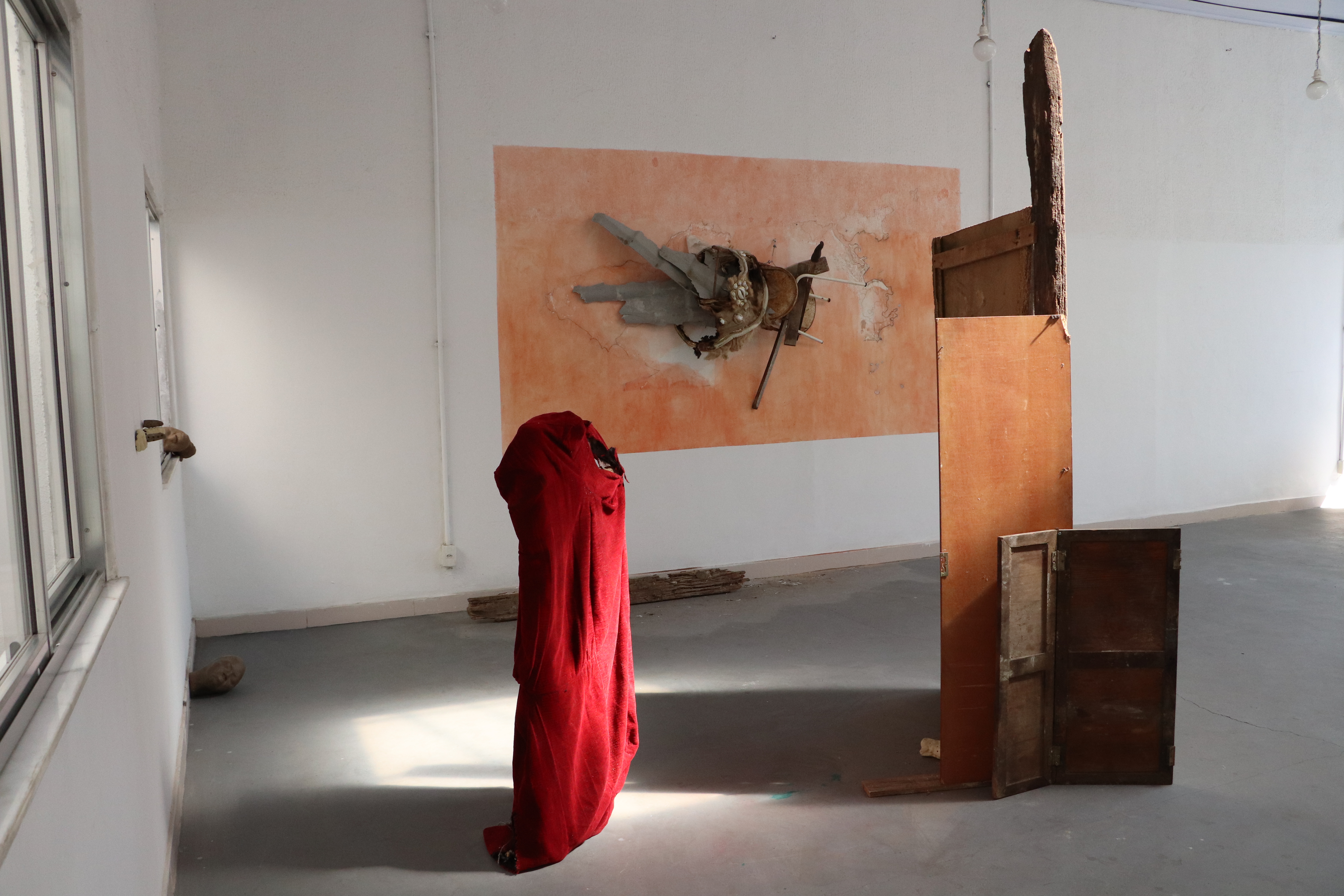
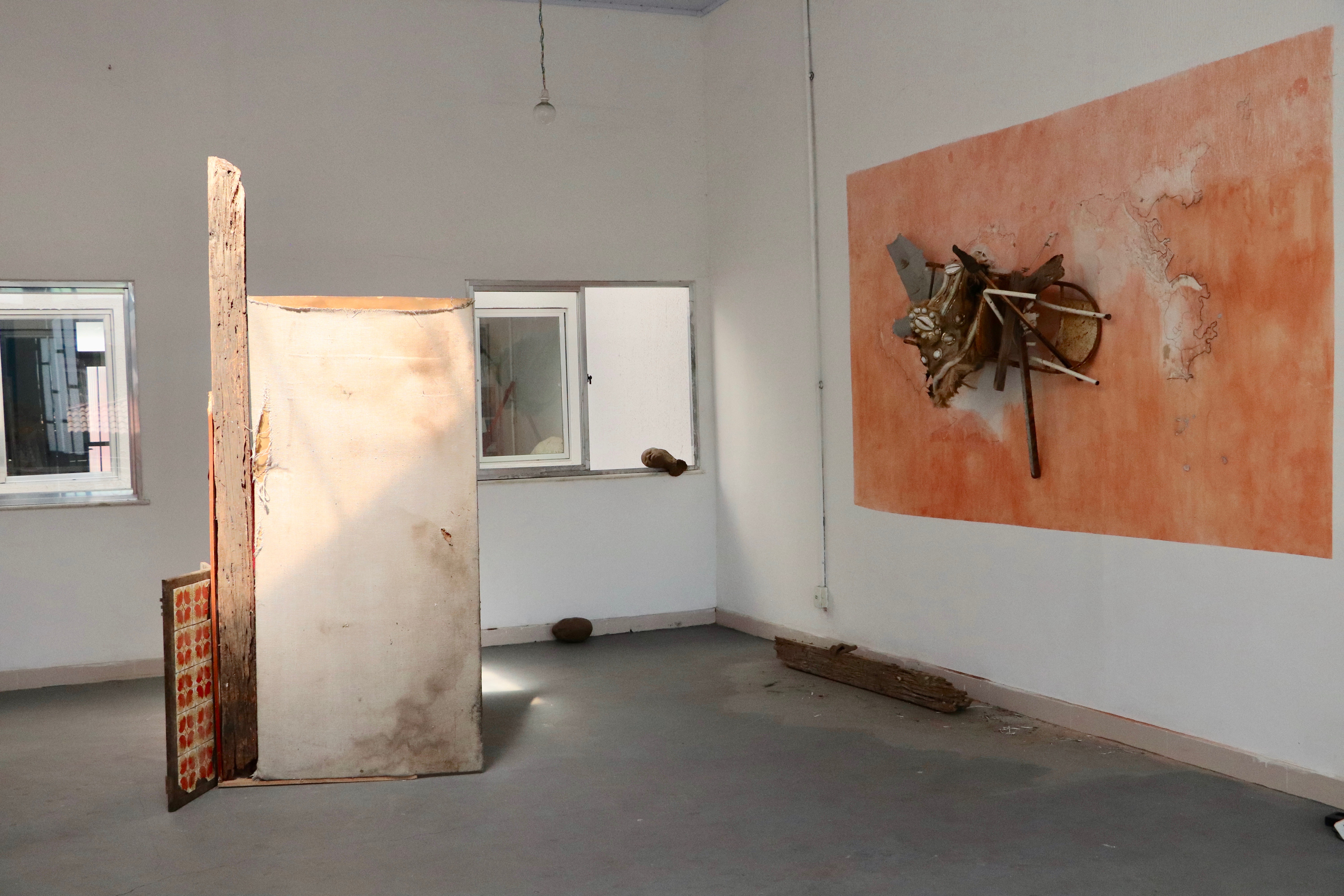
I also constructed my work with left over material collected from the favelas Morro do Cantagalo and Morro de Providencia. These objects in themselves already recall many stories of survival and resistance. Many of the objects are very old, like the old wood used to construct the first houses at the favelas. Other collected objects were of domestic use at the favelas, in the 50’s and 60’s of the last century. With them I wanted to construct my own “barraco” (traditional old precarious hut constructed by original favela dwellers last century). What I created was a space that symbolised a precarious house where I live my own vulnerability in the city of Rio de Janeiro, and where I search for protection. This “barraco” was constituted by the space I created between a structure of a corner made with old found wood and an assemblage sticked to a wall where I drew the map of Rio as a background.

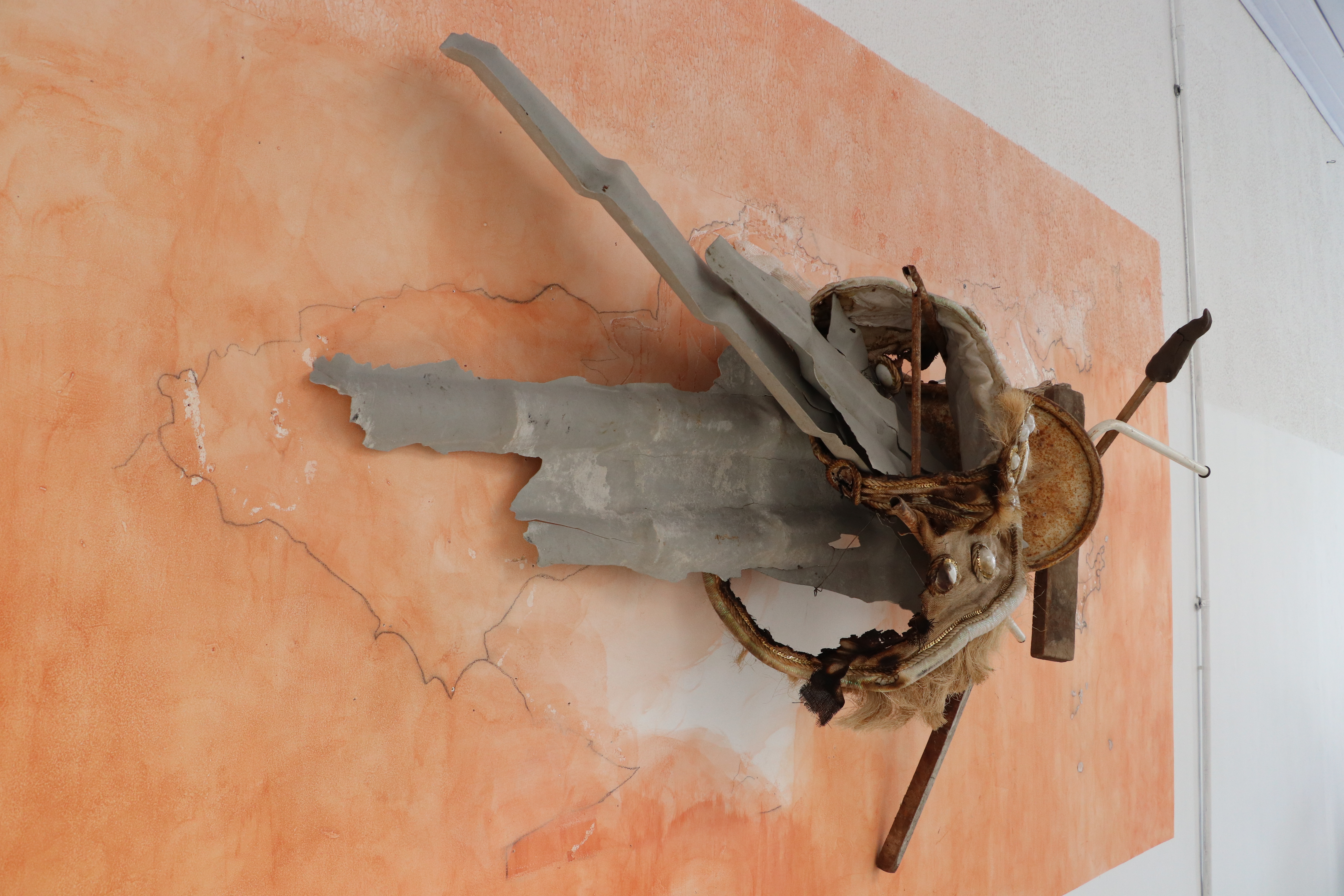
This space was also inspired in the stories of favela dwellers, with whom I felt identified. The assemblage on the wall symbolises a disaster that occurred at the favela of Morro do Cantagalo, during the rainy season of 2019. The ceiling of the local museum office, Museu de Favela (MUF) flew away because of the powerful wind that took it over. The ceiling crushed onto other houses and made huge destruction and ravage. With this assemblage I homage the braveness of the dwellers and the vulnerability we all can feel in this city.
I felt vulnerable partly because of a very stupid situation. During my stay, I took one berimbau class. Because of my lack of experience, I abused of my pink finger and stopped feeling it during a whole month. This is why I instinctively started working with clay and made ceramic pieces that could “protect” my finger. These pieces play with the wall corner I constructed afterwards. They interact with it and search for balance to exist in the space. These pieces symbolise for me the search of refuge, acceptance of loss and vulnerability. My finger represented in this case, that thing that is abused and still wants to survive.
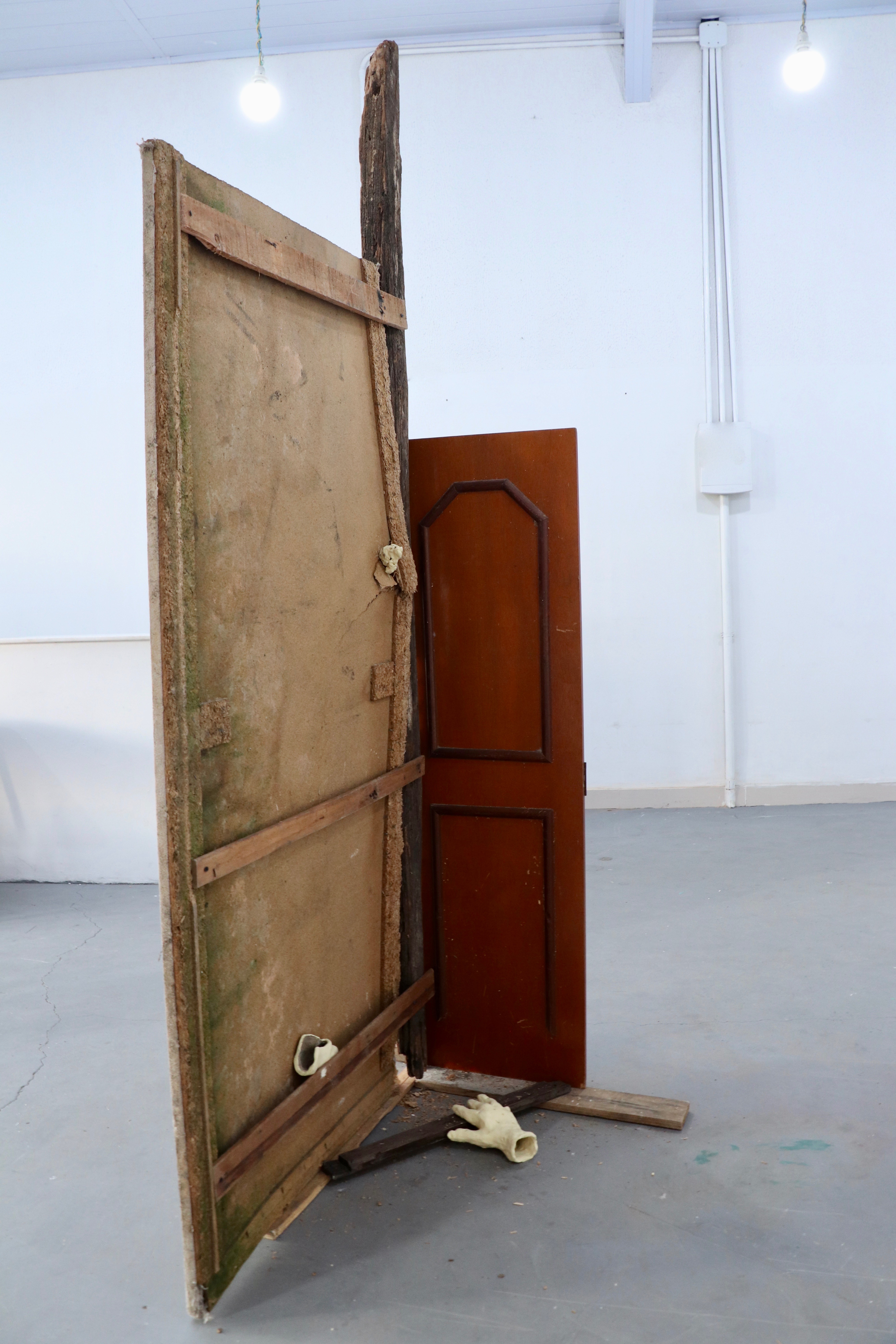
detail:

It made sense to me, to play with the symbolism of the vulnerable body placed within the context of my barraco, a space that represents a vulnerable life. The materials themselves were also referring to vulnerability. The clay was not fired in any of the pieces, so many of the objects could break at the minimal push from the public.
There is an unburned clay piece, which is the support for a found object that functioned as a body in the installation. This piece shines even more because it can support something although itself can break at any moment because of its condition. This refers to the power of the vulnerable, which is a crucial condition for its existence.
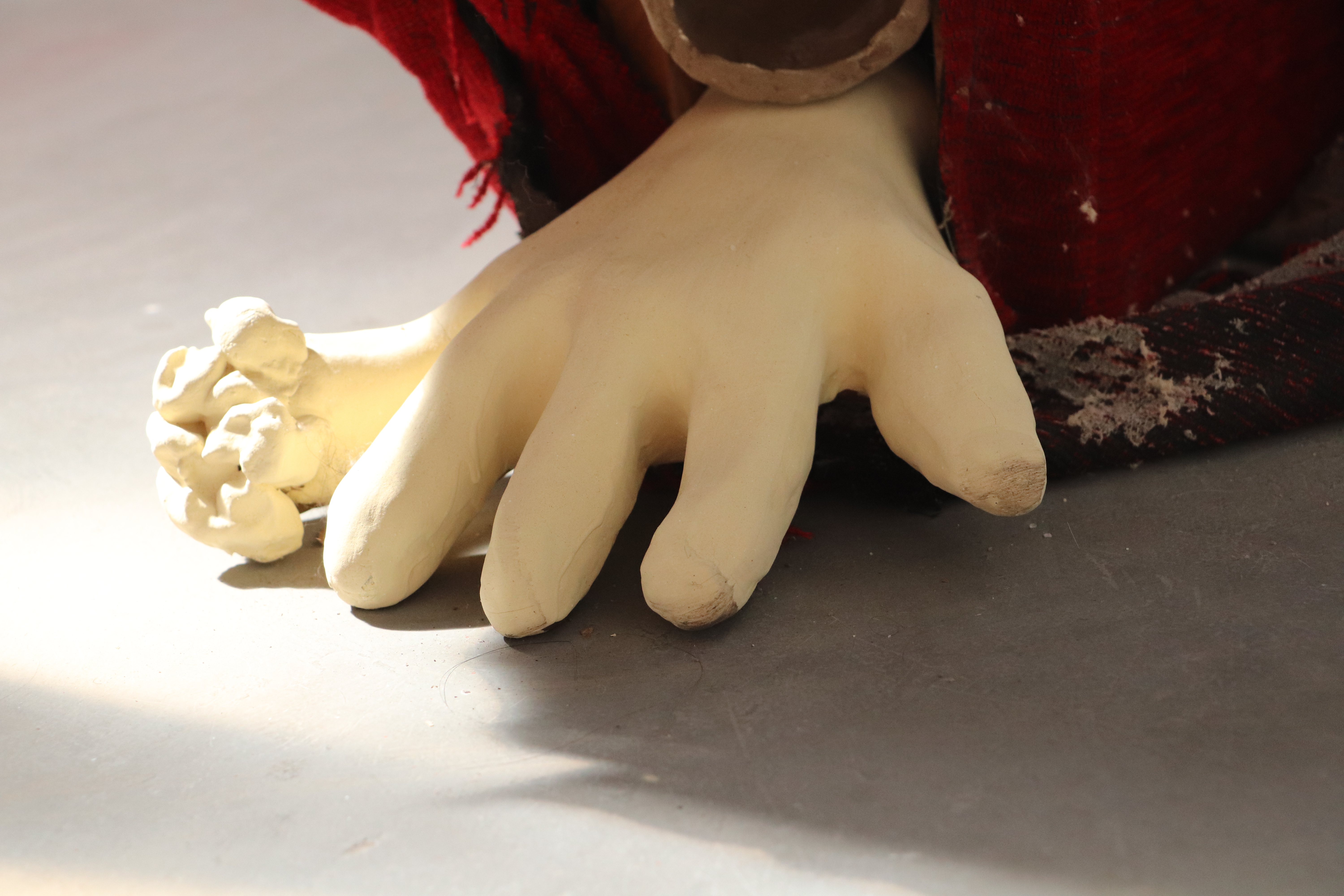
All pieces are balancing in the space, trying to find their own stability, being vulnerable to the presence of the other. Like the heads, one hanging on a window and the other getting out of the wall lying down on the floor. They both are kind of accepting their destiny of eviction and isolation, however they are still existing.
